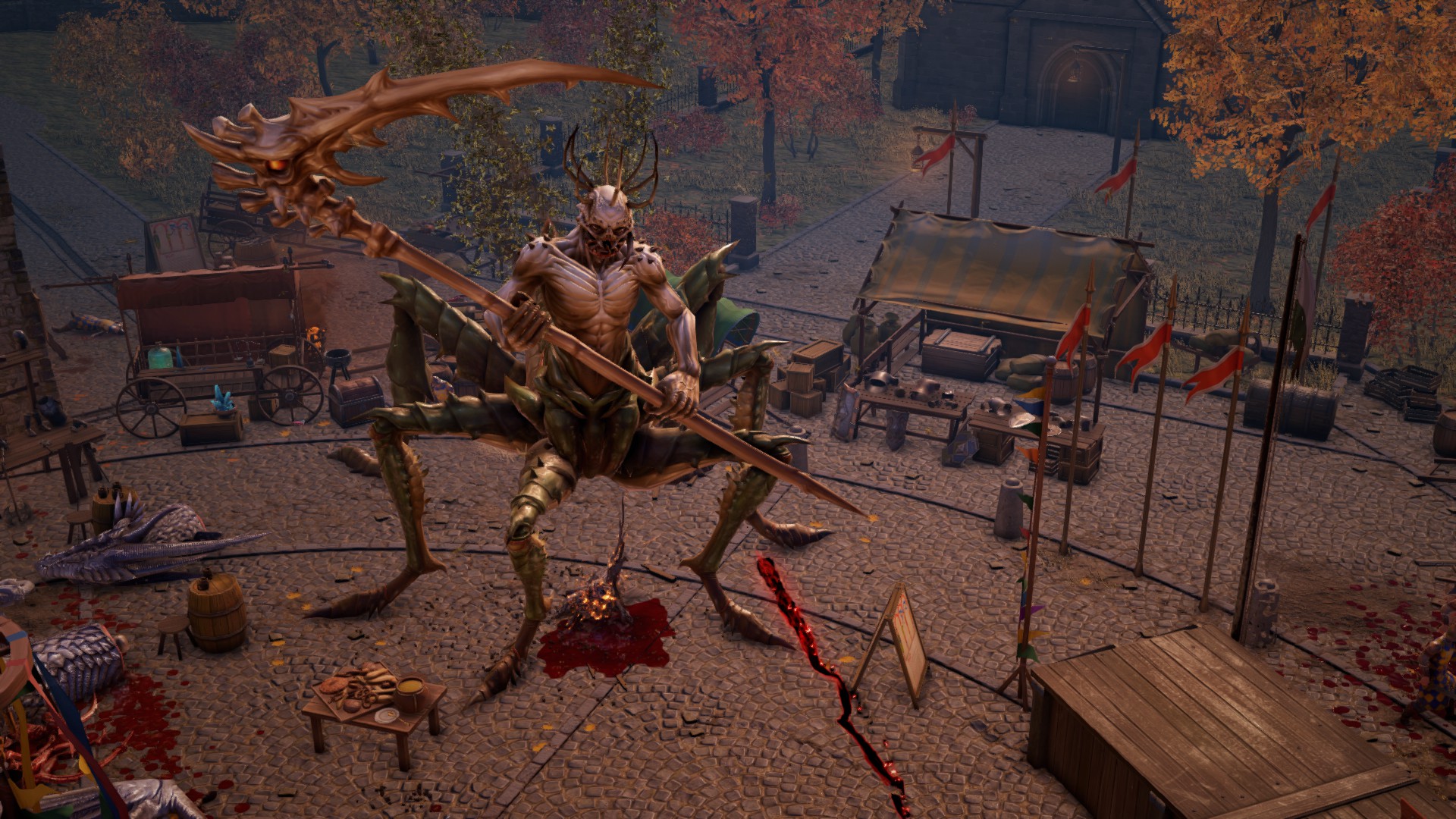Pathfinder: Wrath of the Righteous is a funky game, creaking under the weight of all its systems, subclasses, sidequests, and God, that name. It’s also the game that saw me through first catching Covid, and retroactively my personal game of the year for 2021. Wrath of the Righteous also just makes a phenomenal first impression. Well, second impression.
Your first real gameplay with WotR (I’m filing a grievance if I have to keep writing it out) is cramped dungeon crawling in some caverns under the city of Kenabres. It’s pretty standard CRPG tutorial/prologue fare, elevated here by WotR’s punishing difficulty and tactically rich encounters. Once you’re above ground though? Act one is juicy.
You’re stuck in a city under siege by demons, with your only safe haven a fortified tavern in the thick of it. The powers that be saddle you with a couple main objectives like uncovering the enemy’s plans or rescuing a plot-important individual, but you’ve also got a bevy of optional objectives like saving townsfolk or recruiting companions to pursue. Important areas to hit are sprinkled through a Baldur’s Gate-y world map of the city rendered in stunning detail—your party’s represented as a chess piece sliding around a parchment map in real time, with this audible rasp as you scrape your way over alleys rendered in ink.
Here’s the twist though: moving through the map and resting to heal up after encounters takes time, and within a few in-game days of starting act one, your tavern base will come under attack by demons. Not only is this a supremely long, challenging, and inventive encounter with almost tower defense-style gameplay transposed to Pathfinder rules, but a lot of those optional objectives I mentioned earlier get fundamentally altered or fail entirely if you save them for after the siege.
I wound up playing up to this point from the beginning three times my first playthrough. The first, I took my time and luxuriated, liberally resting to refresh my health and spells—the CRPG’s equivalent of quick saving every five seconds in case you’re spotted in an immersive sim. I was barely able to make any progress on my quests, and wound up coming into the midterm megafight woefully underleveled. After thirty minutes of turn-based battling, I was down half my party but close to the end, or so I figured. That’s when a big old miniboss of a hell-minotaur showed up and cleaved through the rest of my guys.
Second round: I made it all the way through to the other side, but some of the quests I missed were kinda load-bearing for the companion and build choices I wanted to make. This seriously cheesed me off at the time, but now I think of it fondly—it’s a rare game that has the guts to say “fuck you, deal with it” when you miss something or mess up, and I love a hardcore, unforgiving game. Anyway, I started my Groundhog Day loop over one more time and absolutely beasted through Kenabres under siege, nailed every quest and level up I was aiming for, and showed that hell-minotaur what for.

The rest of Wrath of the Righteous is great as well, but the tense, low-level, high-stakes gameplay of the first act especially speaks to me. It’s hard to do low-level d20 combat right, but Owlcat nailed it like few others—after 2003 or so most RPGs want to rush you past the early levels so you can get all your juicy powers and stop whiffing attack rolls, and only old favorites like the original Baldur’s Gate, Icewind Dale, and the Temple of Elemental Evil, or obscure gems like the excellent Swordflight campaign for Neverwinter Nights come to mind as really luxuriating in and celebrating low-level RPG combat.
The tavern siege set piece is this great moment of catharsis for all the timed questing you were just rushing to get in, and I think it’s an all-timer CRPG combat encounter—splitting up your party to cover the weaknesses in this perimeter then rushing to adapt as the situation changes, cursing out the gaggle of demon cultists that spawned right where you’re most defenseless. I also love how Owlcat necessarily limits your resting with this first act’s time crunch, turning it into a prolonged resource management challenge.
It’s clear Owlcat realizes it hit on something special with this first act—WotR’s second DLC, Through the Ashes, was a low level adventure with even more resource constraints set in Kenabres in parallel to the events of act one. Now I’m just hoping the studio can spark that same tense, exhilarating feeling in its upcoming Warhammer 40K CRPG, Rogue Trader.

